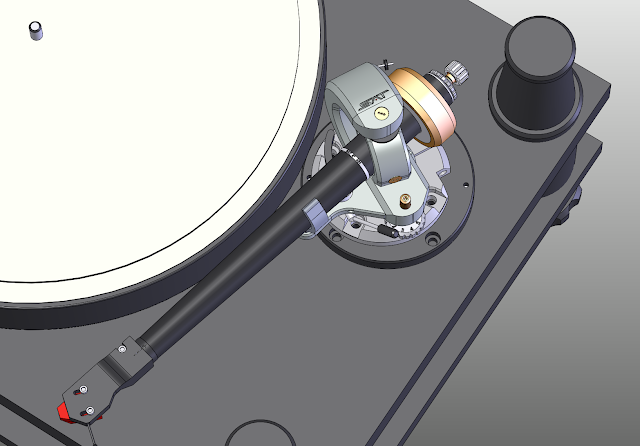

If you’re ever in the market for a re-wiring and re-build of your SME 3009 tonearm, or you want to see what the fuss is about (Alfred also sells rebuilt SME 3009 arms), I would enthusiastically recommend you give Alfred at SME Tonearms a call. Put plainly, it has a lot more oomph and I think it’s more fun to listen to. While I would give the Rega P7/RB700 the edge in terms of delicate refinement and elegance, the TD125/SME 3009 has a lot more presence and, I think, fills the room better.
#Sat sme tonearm series#
And did I mention it looks the business, too?Ĭoupled with the Thorens TD 125 MkII (connected to a Graham Slee Era Gold V phono stage and Naim Nait 5i amp), the SME 3009 Series II provides excellent bass response, a deep and wide soundstage, and superb dynamics. I feel like I have a brand new SME 3009 Series II that can easily compete with the Rega RB 700 on my P7 for years and years to come. To say I was impressed would be a massive understatement. Once I got the tonearm mounted and all the necessary adjustments made (alignment, balancing, vertical tracking force, vertical tracking angle, anti-skate) I sat back in my couch and listened to a few records. Alfred replaces this with a continuous run of wiring (1.25 metres of Cardas Litz 18 karat gold wire) terminated at the end with 18 karat gold Neutrik RCA connectors, meaning, effectively, no disruption in the connection (not to mention brand new and modern wiring/connectors). The separate RCA cables and ground wire then connect via the DIN connector. The original SME 3009 Series II has wiring from the headshell that terminates at the base of the tonearm with a four-pin DIN connector. The best part of Alfred’s service (apart from the tip-to-tip rebuild), in my mind, is his modification of the original wiring scheme. In fact, it looked brand new! In addition to the arm, Alfred sends along everything you’ll ever need for it (including original SME alignment protractor and mounting gauge, Allen keys, mounting hardware, etc.), all carefully packed and protected in bubble wrap. His commitment to service and detail is, quite simply, exceptional.Īt any rate, after less than two weeks, I had my tonearm back. Every time I emailed him with a question, Alfred called me back within minutes of receiving it. At every step of the process he is more than willing to talk about any issues or answer any questions you might have. He explains meticulously what he needs/intends to do after he has examined and taken apart your arm. Once the service is initiated, Alfred keeps in regular contact and provides regular updates and information, as required.
#Sat sme tonearm plus#
The service costs $350 plus shipping (plus the additional cost of any significant parts that need to be replaced). In addition, when you receive it back, your arm will come with every accessory that it left the SME factory with, including all original manuals, templates and adjustment tools, at no extra cost. Naturally, all worn parts will be replaced with New Old Stock SME parts. When you send us a SME tonearm for re-wiring, your arm will not only be re-wired but completely rebuilt and cleaned from the ground up. I gave him a call, explained the situation, and arranged to send my arm to him for a re-wire and rebuild. After all, while it was in excellent condition visually, the arm was well over thirty years old–and the wiring and connections were a tad brittle, to say the least.Īfter doing some research, talking to a few people, and contacting SME directly in the U.K., there was only one thing to do: contact Alfred Kayser at SME Tonearms (conveniently located for us Canadians in Minesing, Ontario).Īlfred is well regarded and his work highly praised–he is the person to talk to in North America when it comes to SME tonearms, parts, and service. I isolated the problem somewhere between the tonearm and its RCA connectors.Īt this point, I resigned myself to the need for a re-wire/rebuild of the arm. I ran a few basic tests to make sure there was no issue with the phono stage, cartridge, or anything else in the chain (there wasn’t). Specifically, once I started listening to it again, I discovered that I had somehow lost sound in the left channel. When I moved all of my stereo equipment out of storage and into my new place, it seems something happened to my SME 3009 Series II tonearm along the way or possibly during its hibernation. Most recently, I had the pleasure of doing business with Alfred Kayser at SME Tonearms–a man I can’t praise enough or be more impressed with.įirst, some context. One of the things I love most about my analogue adventures is the interesting people I meet along the way.


 0 kommentar(er)
0 kommentar(er)
